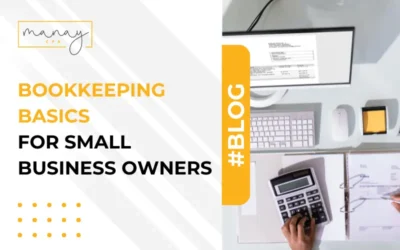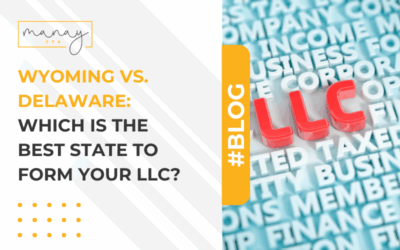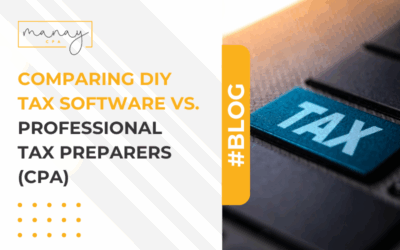Expert Guide: Tax Planning for Manufacturers

Arguably, one of the greatest burdens to any business is usually taxation. Whether it’s a start-up or an established manufacturing business, taxes significantly impact your bottom line. In today’s globalized and competitive market, manufacturing businesses face complex and dynamic tax challenges. In this guide, we will explore some of the effective tax planning strategies for manufacturing businesses.
Table of Contents
ToggleUnderstanding Manufacturing Business Taxes
In the world of manufacturing, mastering tax planning is paramount. Navigating your tax responsibilities with foresight cultivates stability and expansion. This industry’s intricacies magnify the significance of strategic tax planning. From steering production expenses to maneuvering through sector-specific regulations, effective tax strategies are foundational.
Importance of Tax Planning
The significance of tax planning in manufacturing cannot be overstated. It’s not merely about meeting obligations; it’s a catalyst for financial agility. Proper planning optimizes resource allocation, propels innovation, and ensures compliance, all of which drive sustainable growth.
Key Tax Challenges in the Manufacturing Sector
Manufacturing businesses are subject to various types of taxes at the federal, state, and local levels, depending on their size, location, activities, and income. Some of the common taxes include income tax, sales tax, property tax, and payroll taxes. In some cases, franchise tax, and customs duty may also apply.
Evidently, manufacturing business taxes can be complex and challenging to manage. That is why tax planning is crucial for optimizing financial efficiency and compliance. And this is why seasoned tax professionals are invaluable for insights into deductions, credits, and exemptions that can significantly impact your bottom line. Embracing their guidance empowers your business to mitigate tax challenges effectively, fostering financial resilience and success.
Choosing the Right Business Structure
Selecting a business structure is a pivotal decision with implications that go beyond legal formality. It’s the cornerstone that shapes your operations, liability, and, significantly, your tax implications. Navigating the maze of business structures demands careful consideration of their far-reaching impacts on your financial landscape. From sole proprietorships to corporations and everything in between, each structure presents a unique blend of advantages and drawbacks. Understanding these nuances is essential for minimizing your tax burden.
Impact of Entity Type on Taxes
Selecting the appropriate business structure profoundly influences your tax obligations. Sole proprietorships and partnerships offer pass-through taxation, meaning profits flow to owners’ tax returns. Corporations, on the other hand, face double taxation, where both corporate income and dividends are taxed. Limited Liability Companies (LLCs) combine liability protection with tax flexibility. You should consult tax professionals and carefully consider which business structure aligns your tax strategy with your business goals.
Pros and Cons of Different Structures
Each business structure has its merits and drawbacks. For example, sole proprietorships boast simplicity but lack liability protection. Partnerships share profits and responsibilities but also liabilities. Corporations shield owners from personal liability but endure complex regulations and convoluted tax structures. LLCs merge the benefits of limited liability and flexible taxation. It goes without saying that tailoring your choice to your business vision and circumstances is pivotal for optimal tax outcomes.
Strategic Expense Allocation
One of the core tenets of tax planning involves the strategic allocation of your business’ expenditure to maximize deductions and optimize taxable income. Identifying which expenses are deductible within the manufacturing industry can significantly impact your bottom line.
Identifying Deductible Manufacturing Expenses
In tax planning, distinguishing between deductible and nondeductible expenses significantly impacts your bottom line. While costs associated with raw materials, labor, and manufacturing processes are often deductible due to their direct connection to production, other operational aspects also contribute. Administrative expenses facilitating business operations and marketing costs to promote your products fall within the deductible category. Awareness of these eligible deductions becomes a powerful tool for minimizing your taxable income, leading to substantial savings that can be reinvested into your manufacturing endeavors, innovation, and growth.
Capital Expenditures vs. Operating Expenses
The art of tax optimization within manufacturing extends to strategically categorizing your expenses as either capital expenditures or operating expenses. This categorization carries significant implications for your overall tax liability. Capital expenditures, encompassing substantial investments like machinery purchases or facility improvements, offer depreciation deductions over time. Operating expenses – the day-to-day costs such as utilities and maintenance – are immediately deductible. Properly allocating your expenses between these categories can maximize your deductions, align your financial strategies, and ultimately optimize your taxable income, resulting in a more efficient tax position for your manufacturing business.
Utilizing Tax Credits and Incentives
Tax credits and incentives form a potent arsenal for a manufacturing business, offering avenues for enhanced financial management. The Research and Development (R&D) tax credits stand as a prime example, beckoning manufacturers invested in innovation. These credits, designed to offset a portion of qualifying R&D expenses, serve as a dual-purpose catalyst: fueling innovation while alleviating tax burdens. Prudent documentation of R&D activities becomes pivotal in harnessing these incentives.
Research and Development (R&D) Tax Credits
Manufacturers investing in research and development can access R&D tax credits. These credits offset a percentage of qualifying expenses, promoting innovation while lessening tax burdens. Specifically, manufacturers engaged in R&D can unlock these credits, which effectively serve to cushion a portion of their qualifying expenses. This financial incentive simultaneously fosters innovation while lessening tax liabilities. It’s worth noting, however, that meticulous documentation of R&D activities is an imperative element in substantiating claims for these crucial credits.
Investment Tax Credits for Manufacturing
Encouraging capital investment, the manufacturing landscape offers the prospect of investment tax credits. These credits serve as incentives for businesses to enhance their capital infrastructure by allowing them to deduct a portion of qualified equipment costs from their tax liabilities. Beyond being an economic stimulant, these incentives bolster cash flow, providing manufacturers with a potent tool for growth and advancement.

Inventory Management and Tax Implications
In manufacturing, the significance of inventory management extends beyond operational efficiency – it intersects with tax considerations. In tax planning for manufacturing businesses, choosing between LIFO and FIFO inventory valuation methods and efficient inventory practices is crucial.
LIFO vs. FIFO Inventory Valuation Methods
The intricacies of tax planning meet the nuances of inventory valuation when deciding between LIFO and FIFO methods. LIFO, or Last In, First Out, often proves advantageous during periods of inflation, as it attributes the most recent costs to goods sold, leading to lower taxable income. In contrast, FIFO, or First In, First Out, corresponds with the chronological cost flow. Opting for the right method hinges on understanding your financial context and navigating industry trends, as it directly impacts your tax liabilities.
Minimizing Tax Impact through Efficient Inventory Practices
Sound inventory management goes beyond operational efficiency – it impacts taxes, too. By maintaining optimal inventory levels, utilizing just-in-time practices, and avoiding stockpiling excess inventory, manufacturers can lower taxable income and enhance cash flow. This disciplined approach to inventory optimization translates into tangible tax efficiencies, allowing your manufacturing enterprise to thrive.
Supply Chain Optimization for Tax Benefits
With globalization, supply chain dynamics offer diverse avenues for tax benefits. Manufacturing businesses tend to have multiplier effects wherever they’re set up, and that’s why they can benefit from location-specific tax incentives and the services of tax-efficient vendors to control costs while maintaining compliance.
Location-Based Tax Incentives
Strategic location selection in the manufacturing landscape goes beyond logistical considerations; it can trigger attractive tax benefits. Governments often offer targeted incentives to businesses setting up operations in specific regions, stimulating local economic growth. Reduced tax rates, grants, and various financial advantages amplify the appeal of these areas, aligning with economic expansion strategies. With seasoned tax professionals, you can leverage these benefits to align with operational and financial strategies, enhancing your manufacturing venture’s viability.
Vendor Selection for Cost and Tax Efficiency
The selection of vendors holds hidden potential for financial optimization – a dual impact on cost and taxes. Choosing suppliers with favorable terms goes beyond cost management; it directly impacts your tax position. Vendors who align with your tax optimization strategies not only enhance your profit margins but also lower your taxable income. This collaborative approach empowers your manufacturing business to achieve dual objectives: financial efficiency and strategic partnerships.
Transfer Pricing and International Tax Considerations
For manufacturers operating across borders, the intricacies of transfer pricing and international tax dynamics come into play. Accurately determining the value of intercompany transactions, and avoiding double taxation becomes crucial.
Managing Intercompany Transactions
This practice ensures fair and equitable taxation across jurisdictions, mitigating the risks of tax disputes and optimizing financial operations. Naturally, international manufacturing involves complex intercompany transactions. Managing transfer pricing – the value attributed to goods and services exchanged within a multinational company – is essential. It’s worth partnering with experienced tax experts to ensure compliance in all jurisdictions the company operates in, along with equitable taxation and operational coherence across these jurisdictions.
Mitigating Risks of Double Taxation
The lack of uniformity in tax codes internationally introduces complexities, and one such concern is double taxation. Mitigating the risks of double taxation requires an in-depth understanding of international tax treaties and regulations. This is why the expertise of seasoned tax professionals coupled with comprehensive documentation is invaluable, allowing your manufacturing business to thrive internationally.
Employee Compensation Strategies
One of the key aspects of tax planning for manufacturing businesses is how to compensate their employees, especially their executives. Employee compensation can have significant tax implications for both the employer and the employee, depending on the type and amount of compensation.
Executive Compensation and Tax Implications
Executive compensation is a complex and evolving area of tax law that affects publicly held corporations and tax-exempt organizations. Different jurisdictions have rules governing the deductibility and taxation of executive compensation. The bottom line is balancing executive compensation involves a dual focus on attracting talent and optimizing tax outcomes.
Manufacturing businesses need to carefully design their executive compensation packages to align with their business goals, attract and retain talent, and minimize tax liability. So, whether the business is using deferred compensation plans, equity-based compensation, performance-based bonuses, or fringe benefits, it needs to strike a strategic balance between workforce motivation and tax efficiency.
Employee Benefit Plans for Tax Savings
Another way to reduce taxable income and save taxes for manufacturing businesses is to offer employee benefit plans to their workers. Employee benefit plans are programs that provide benefits or services to employees in addition to their regular wages or salaries. These could include retirement plans, health insurance plans, wellness programs, or education assistance plans. In most jurisdictions, employee benefit plans also come with reporting and disclosure requirements. And partnering with tax experts could help your business remain compliant.
State and Local Tax Planning
The intricate patchwork of state and local taxes presents challenges for manufacturing enterprises spanning multiple jurisdictions. State and local taxes can include income tax, sales tax, property tax, excise tax, and payroll tax. Tax experts can help you understand the different tax obligations and the criteria that trigger them, along with tax incentives offered in various jurisdictions.
Navigating Nexus and Apportionment Rules
Nexus is the legal term for whether a state has the power to tax a business. On the other hand, apportionment is the method of allocating a portion of a multistate business’s income to each state where it has a nexus. For a manufacturing business, understanding the criteria triggering tax obligations in a state – and apportionment rules is pivotal in preventing unexpected tax liabilities.
You may need professional guidance to fully understand nexus, the threshold that triggers a business’ tax obligations within a state. And they’ll also guide you through some of the strategies that can be used to minimize tax exposure, including how to source sales to destination states rather than origin states; the advantages of excluding non-business income from apportionment; and claiming throwback or throwout rules.
State Tax Credits and Incentives
States extend an array of tax credits and incentives to bolster manufacturing. From investment incentives to job creation credits and energy-related perks, these opportunities align with both financial and operational objectives. Manufacturers who adeptly capitalize on these provisions enhance their tax efficiency.
State tax credits and incentives can reduce state and local tax liabilities for manufacturing businesses and provide cash flow benefits or savings. However, they come with eligibility requirements, application procedures, documentation standards, reporting obligations, and compliance rules.
Compliance and Reporting Best Practices
Meticulous adherence to tax compliance and reporting standards is non-negotiable. Failing to comply with the tax laws and regulations or to report the correct information to the tax authorities can result in penalties, interest, audits, or litigation.
Timely Filing of Returns and Documentation
One of the best practices for tax compliance and reporting is to file the tax returns and documentation on time or before the due date. This can help avoid late filing penalties, interest charges, and possible loss of deductions or credits. Meeting deadlines is not just a matter of routine; it’s a strategy to maintain your business’s financial integrity and credibility.
Avoiding Common Tax Compliance Errors
At the very least, being aware of common compliance errors helps keep your manufacturing business in good standing with tax authorities. Some of the common tax compliance errors that manufacturing businesses should avoid include, errors in accounting methods or inventory valuation; payroll tax credits; excise tax exemptions; property tax abatements; sales tax exemptions or refunds; and income tax credits.
Note that the world of tax compliance is ever-evolving. Therefore, for a manufacturing business, partnering with legal and tax experts like Manay CPA guarantees that your business is fully tax-compliant in every jurisdiction.

Published on: 13 September 2023
Last updated on: 09 April 2024
Manay CPA is a reputable, full-service CPA firm based in Atlanta, Georgia. Founded in 2001, we provide comprehensive accounting and tax solutions to individuals and businesses across all 50 states.





